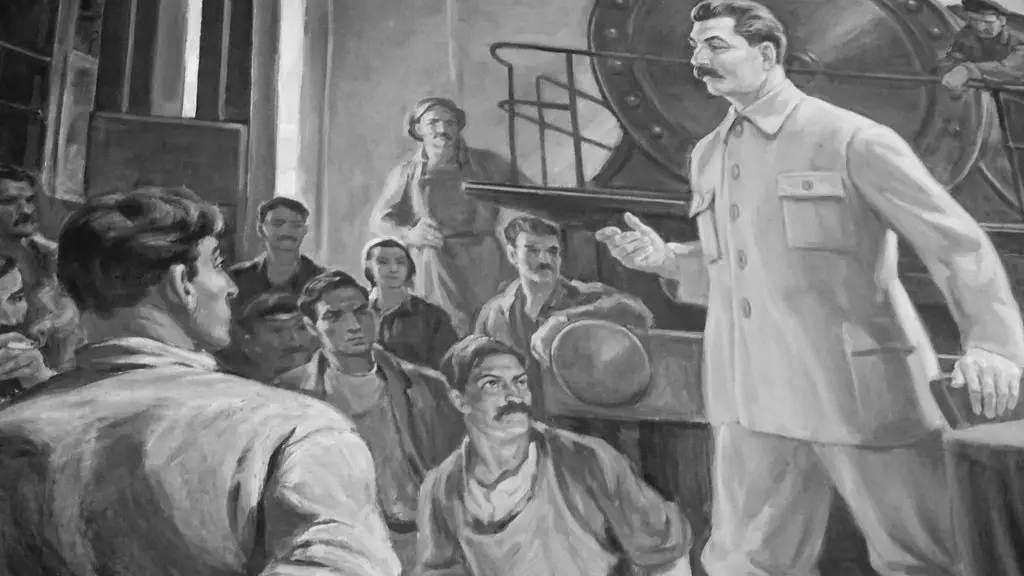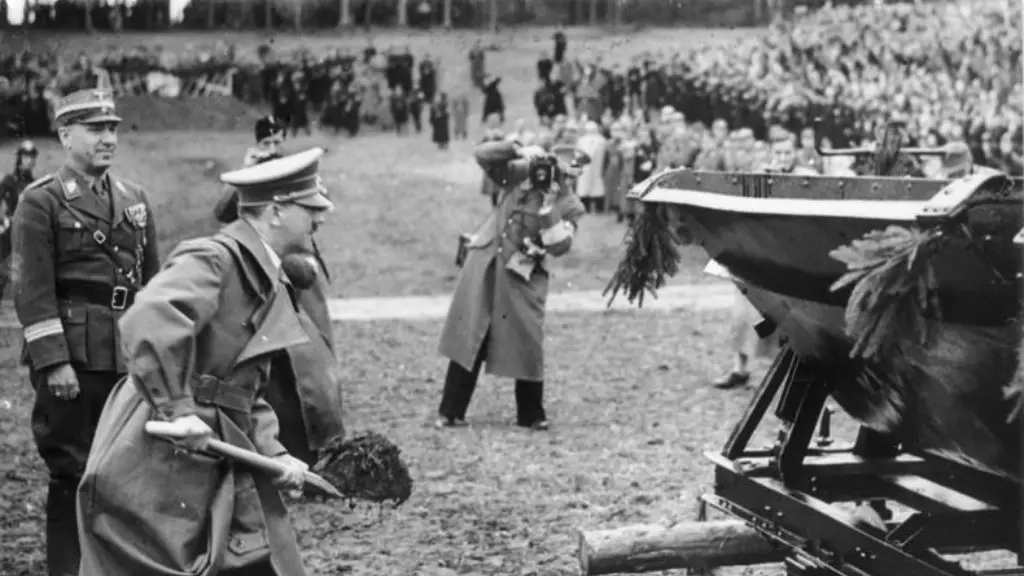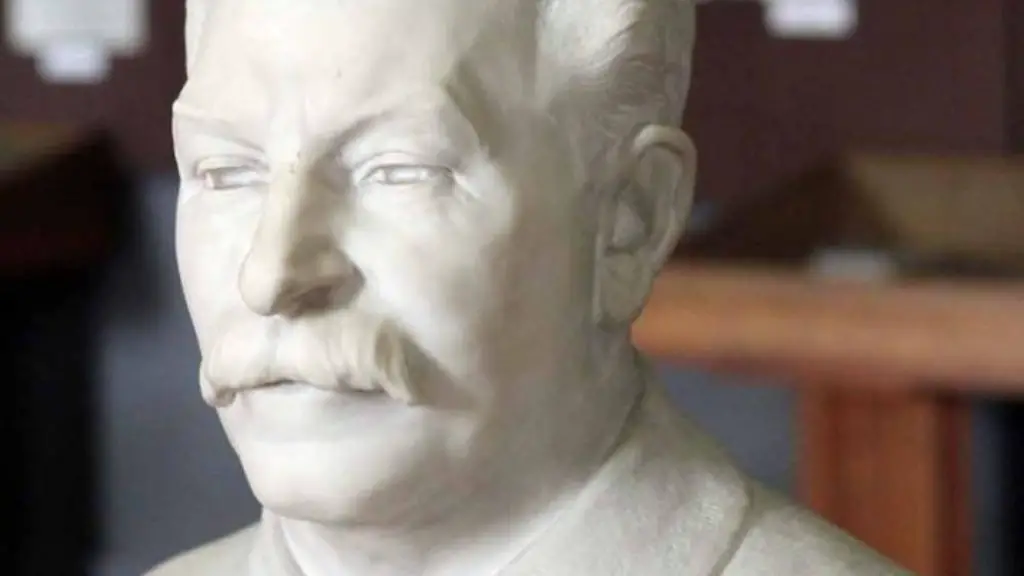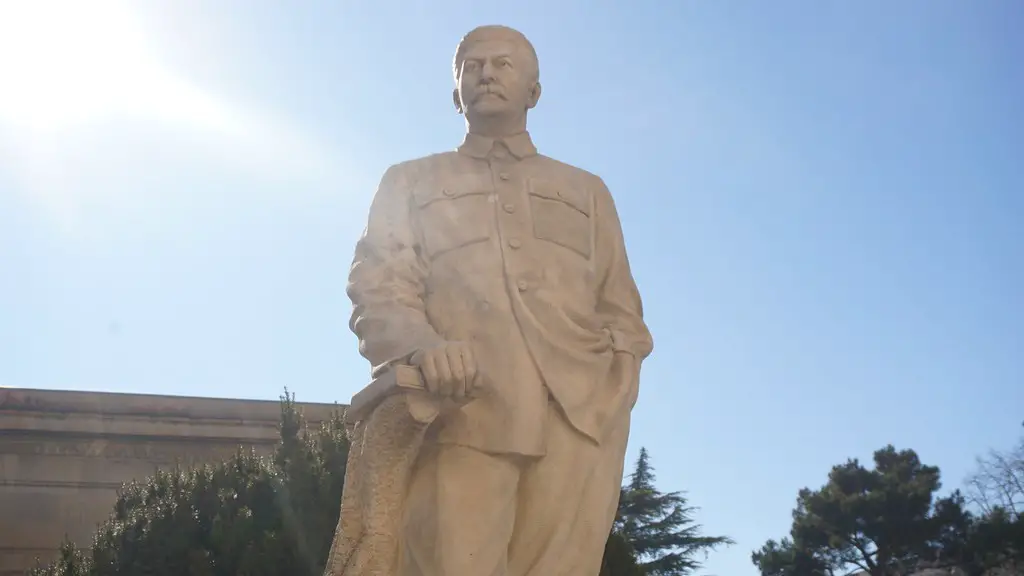During his reign as the Soviet Union’s dictator from 1927 until 1953, Joseph Stalin was known for his iron-fisted rule and for his brutal treatment of his enemies, both real and imagined. Stalin’s enemies were often subjected to show trials, imprisonment, and execution. The dictator also used propaganda to discredit and vilify his enemies.
The Soviet Union under Joseph Stalin was a dictatorship in which the Russian Communist Party held complete power. Stalin used secret police and propaganda to control the people and eliminate his enemies. He frequently purged the party and government of anyone he saw as a threat, real or imagined. Thousands of people were executed or sent to labor camps, where many died.
What did Joseph Stalin deal with?
Stalin’s promotion of Marxism-Leninism abroad was an attempt to spread the Soviet Union’s influence and control to other countries. This was particularly evident in his support of European anti-fascist movements during the 1930s. Stalin saw the Spanish Civil War as an opportunity to promote the Soviet Union’s ideology and to undermine the influence of capitalist countries. In 1939, Stalin signed a non-aggression pact with Nazi Germany, which led to the Soviet invasion of Poland. This showed that Stalin was more interested in advancing the Soviet Union’s interests than in fighting fascism.
Stalin was deeply suspicious of both Roosevelt and Churchill. He knew his capitalist allies would likely oppose any attempt to expand Soviet influence in eastern Europe when the war ended. Stalin was paranoid about the possibility of the two leaders betraying him and was always on the lookout for signs of their supposed treachery.
How did Stalin deal with the cold war
Stalin’s decision to refuse American aid and instead confront the West led to the Soviet blockade of Berlin. This was a major turning point in the Cold War, and signaled the beginning of a long period of tension and conflict between the two superpowers.
The rise of Stalinism in the Soviet Union was a process that included the creation of a one-party totalitarian police state, rapid industrialization, the theory of socialism in one country (until 1939), collectivization of agriculture, intensification of class conflict, colonization of Eastern Europe (since 1939), a cult of personality, and subordination of the interests of individual Soviet citizens to the state.
What are 5 interesting facts about Joseph Stalin?
1. Stalin got his name while he was a revolutionary.
2. Before Lenin died, he wrote a Testament where he recommended that Stalin be removed from power.
3. Stalin created the Gulag slave labor camp.
4. Before he had the name Stalin, he used the name “Koba.”
5. Stalin’s right-hand man was Vyacheslav Molotov.
Stalin’s belief that Hitler wouldn’t attack was so strong that he was completely bewildered when he realized on the night of June 21 that the Germans were coming. He was shocked when his foreign minister, Molotov, handed him a German declaration of war. At that moment, only his anger prevented him from collapsing.
When did US and Russia become enemies?
The 1950s and early 1960s were a time of great tension between the United States and the Soviet Union. The two superpowers were in a competition for world dominance, and both had developed nuclear weapons. In October 1962, the Soviet Union decided to install nuclear missiles in Cuba, just 90 miles from the US mainland. This led to a crisis in which the US and the USSR came close to nuclear war. The crisis was eventually resolved through diplomacy, but it was a near-disaster that showed how dangerous the Cold War was.
In the mid-1990s, Russia was beaten by a much smaller force in the First Chechen War, after launching an ill-thought out assault on Grozny, Chechnya’s capital, based on poor intelligence and sheer hubris. This wouldn’t be the first time post-Soviet Russia has admitted a humiliating military defeat.
Was Stalin to blame for the Cold War
It is now widely accepted that the Cold War was the result of a combination of factors, including the expansionist policies of both the Soviet Union and the United States. While Stalin’s aggressive expansionism was certainly a contributing factor, it was not the primary cause of the Cold War.
After Lenin’s death, Stalin began traveling across the USSR to deliver lectures on Leninist philosophy. He started to position himself as the successor to Lenin. In the 1920s, Stalin used his position to expel critics within the Communist Party and tightened his grip on the party.
What three methods did Stalin use to take control of his country and people?
At the heart of every successful dictatorship is a propaganda machine that can control the thoughts and emotions of the population. And one of the most effective ways to control people is to instill fear in them.
When people are afraid, they are more likely to comply with whatever the authorities tell them to do. For example, during the Holocaust, the Nazi regime used propaganda and terror to control the population andsilence any opposition. They also glorified their leader, Adolf Hitler, and Murdered millions of people to show their power.
Today, we can see how propaganda and fear are still being used to control people. For example, in North Korea, the government uses propaganda to brainwash the population into compliance. They also use fear and terror to keep people in line, and they praise and glorify their leader, Kim Jong-un.
Stalin’s reign of terror was the most effective way for him to stay in power. By using the secret police to crush any dissent and monitoring everyone, he was able to eliminate any threats to his authority. Anyone could be arrested and imprisoned or even executed for the slightest offenses, which kept people in line and afraid to speak out against him.
What are 3 important things Stalin did
Stalin’s industrialization of the USSR and collectivization of agriculture were two of his most important accomplishments. During the war, Stalin’s leadership helped the USSR defeat Germany. After the war, Stalin extended Soviet control to a number of eastern European countries.
After the explosion of the atomic bomb, Stalin was very angry. He felt that Russia had earned its place as a world power through its victory in the war, but that this had been taken away by the bomb. He is reported to have said to Kurchatov, “Hiroshima has shaken the whole world.”
What did Stalin do to his people in ww2?
Despite a promising start to the war, by 1942 the Soviet Union was in trouble. The Red Army had been dealt a crushing defeat by the German Army at the Battle of Stalingrad, and was struggling to regain momentum. In response, Joseph Stalin began to take a more active role in military decision-making. He also introduced a series of harsh measures to shore up morale and maintain control of the population, including the introduction of military tribunals and the use of secret police.
While Stalin’s leadership was undoubtedly a factor in the Soviet Union’s eventual victory in the war, it also came at a high cost. The human rights abuses committed by the Stalinist regime were responsible for the death and suffering of millions of people.
According torevealed by Viktor Suvorov in, Stalin had planned to launch a a massive offensive against Nazi Germany in July 1941, only a few weeks after the date on which the Axis invasion of the Soviet Union took place. Suvorov claims that the Red Army had already redeployed from a defensive to an offensive stance by this time, making the prospect of a successful Soviet counter-attack highly likely. Of course, we will never know for sure what would have happened if Stalin had gone ahead with his plan, but it is certainly an interesting thought experiment.
Warp Up
There is no one answer to this question, as Stalin dealt with enemies in many different ways. Sometimes he would order their arrest and execution, while other times he would work to undermine and discredit them. Additionally, Stalin was known to use propaganda to paint his enemies in a negative light and make the public fear and distrust them.
Joseph Stalin was a brutal dictator who didn’t hesitate to eliminate anyone who he saw as a threat. He oversaw the death of millions of people during his reign, and his enemies were no exception. Stalin was paranoid and paranoid, and he was always worried about being overthrown. He would often have his enemies killed, or sent to labor camps where they would be worked to death. Stalin was a ruthless dictator who will always be remembered for his brutality.





